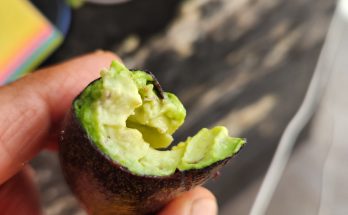By Bernardo Moreno
To explain this controversial issue, I interviewed a specialist, José Domingo Schievenini, PhD in history from UNAM and member of the National System of Researchers (SNI). His research areas focus on drug history and public policy. He has published for scientific journals such as the Social History of Alcohol and Drugs Journal published by University of Chicago Press and in books such as “Cannabis: Global Histories” published by MIT Press. He is currently a professor-researcher at the Universidad Autónoma de Querétaro. Twitter: @DomSvn
BM: When did cannabis start to be banned in Mexico?
JDS: Cannabis arrived on the American continent with the Spanish, in the 16th century. They called it hemp. It was grown completely legally in various parts of Mexico; in fact, planting it on land that has not yet been exploited was a mandate from the Spanish Crown. It was used as a raw material for textiles (clothing, ropes, and sails for ships). These crops ended up spreading throughout a large part of New Spain, the most prosperous areas were those of Alta California and Atlixco, Puebla. Two centuries passed and cannabis had adapted perfectly to the Mexican soil and climate, causing phenotypic modifications in the plants: shorter specimens in height and less thick stems, but more leafy, with more psychoactive resin in their flowers. The indigenous people who worked the hemp crops noticed these flowers—which was to be expected in a population with an ancient herbal tradition. They cut the flowers, took them home, and experimented with them. One concoction stands out: pipiltzizintli (Nahuatl word meaning “the most noble children”) prepared with cannabis and other herbs. It was drunk in divinatory type rituals. The Holy Inquisition found out about these indigenous practices and repressed them as diabolical, just as they punished the use of peyote, hallucinogenic mushrooms (in Nahuatl teonacatl meaning «meat of the gods») and ololiuhqui (later known as «seeds of the virgin”). The inquisitorial repression —scandalized by an indigenous herb supposedly used to have contact with the devil— was the beginning of the process of stigmatizing cannabis in Mexico.
BM: And when did that stigma against marijuana take hold?
JDS: In the mid-19th century, when it was considered a “vice,» that is, a moral defect. The newspapers published articles complaining about the “marijuanos”: lazy, poor, filthy, unemployed who with their red eyes scared decent families and women when they went to do their errands at the market. Marijuana was associated with poverty and vices, yes, but also with madness and violence: «He killed his grandmother with a machete after smoking the devilish marijuana herb» is an example of the tone that could be read in the press. These notes accelerated the stigmatization and as a consequence came the national ban in 1920 for being a plant that literally «causes vices that degenerate the race.» Then, in the mid-20th century, illegal drug trade practices became a criminal problem, and cannabis entered the same bag as heroin, opium, and cocaine. Since then it has been an immoral and illegal plant that —according to the hegemonic discourses— widens one of the most acute problems in the contemporary history of Mexico: drug trafficking.
BM: Is that stigmatization changing today?
JDS: Yes, slightly and gradually. It began to change in 2015, for two reasons: first, due to the media recognition of its medicinal benefits; following the guidelines of the regulation in the USA, the national newscasts showed on open television cases of people who significantly improved their health. This, although it may seem like an insignificant matter, was unprecedented in the Mexican mass media, which had been demonizing cannabis for more than a century and a half. The first and most famous case was that of Grace Elizalde, a girl from Monterrey, who suffered dozens of epileptic seizures every day and with cannabis drops showed enormous improvement. The second reason to talk about a destigmatization process was a decision by the Supreme Court, recognizing a group called SMART (Mexican Society for Responsible and Tolerant Self-Consumption) and their right to grow cannabis for personal consumption. SMART were only four people, but that jurisdictional record of 2015 was the first crack in the prohibitionist paradigm in Mexico. The media, activists, and some academics began to press for this decision of the Court to have a greater impact. This pressure has undoubtedly influenced public opinion and, furthermore, led to several more cases, similar to that of SMART, which had a positive impact on the social perception of cannabis and led to changes in national laws.
To be continued…




